LayerZero Protocol Overview

Key Insights
- LayerZero enables a unified blockchain ecosystem where applications can interact across over 100 supported blockchains, offering developers broad opportunities for dApps in areas like DeFi, stablecoins, and NFTs.
- Unlike traditional blockchain bridges, LayerZero eliminates the need for locked assets, enhancing security and providing faster, more efficient cross-chain transactions through direct messaging and token burning/minting mechanisms.
- With 300+ active teams and over 138 million blockchain messages transmitted, LayerZero has demonstrated robust scalability and trustworthiness, supported by major investors and a growing ecosystem of protocols like Stargate Finance and Polyhedra Network.
Since the advent of Bitcoin's blockchain, enabling direct payments between participants, blockchain technology has evolved rapidly to address increasingly complex challenges. Ethereum introduced a blockchain with a programming language to create smart contracts and decentralized applications, revolutionizing the industry.
However, the rapid growth of these technologies brought significant challenges, such as limited performance and high transaction costs.
This led to the development of numerous Layer 1 (L1) and Layer 2 (L2) blockchains, which inadvertently created an interoperability issue. Each blockchain operated in isolation, leading to ecosystem fragmentation.
Users faced difficulties transferring tokens between blockchains, akin to banks in the same country unable to communicate. This limitation hindered the development of a unified crypto ecosystem.
LayerZero Ecosystem introduces an innovative solution through the Omnichain concept: a unified blockchain networkwhere each chain focuses on its strengths while maintaining full compatibility with others.
What Is LayerZero
LayerZero is an advanced Omnichain protocol designed to address the critical issue of blockchain interoperability. LayerZero unique architecture and modular security model ensure reliable connections between networks, minimizing risks of failures and breaches.
Unlike traditional cross-chain solutions limited to connecting two blockchains, LayerZero's Omnichain approach enables applications to operate seamlessly across multiple blockchains. For example, an app built with LayerZero can allow users to borrow stablecoins on the Avalanche network, secured by tokens on Ethereum.
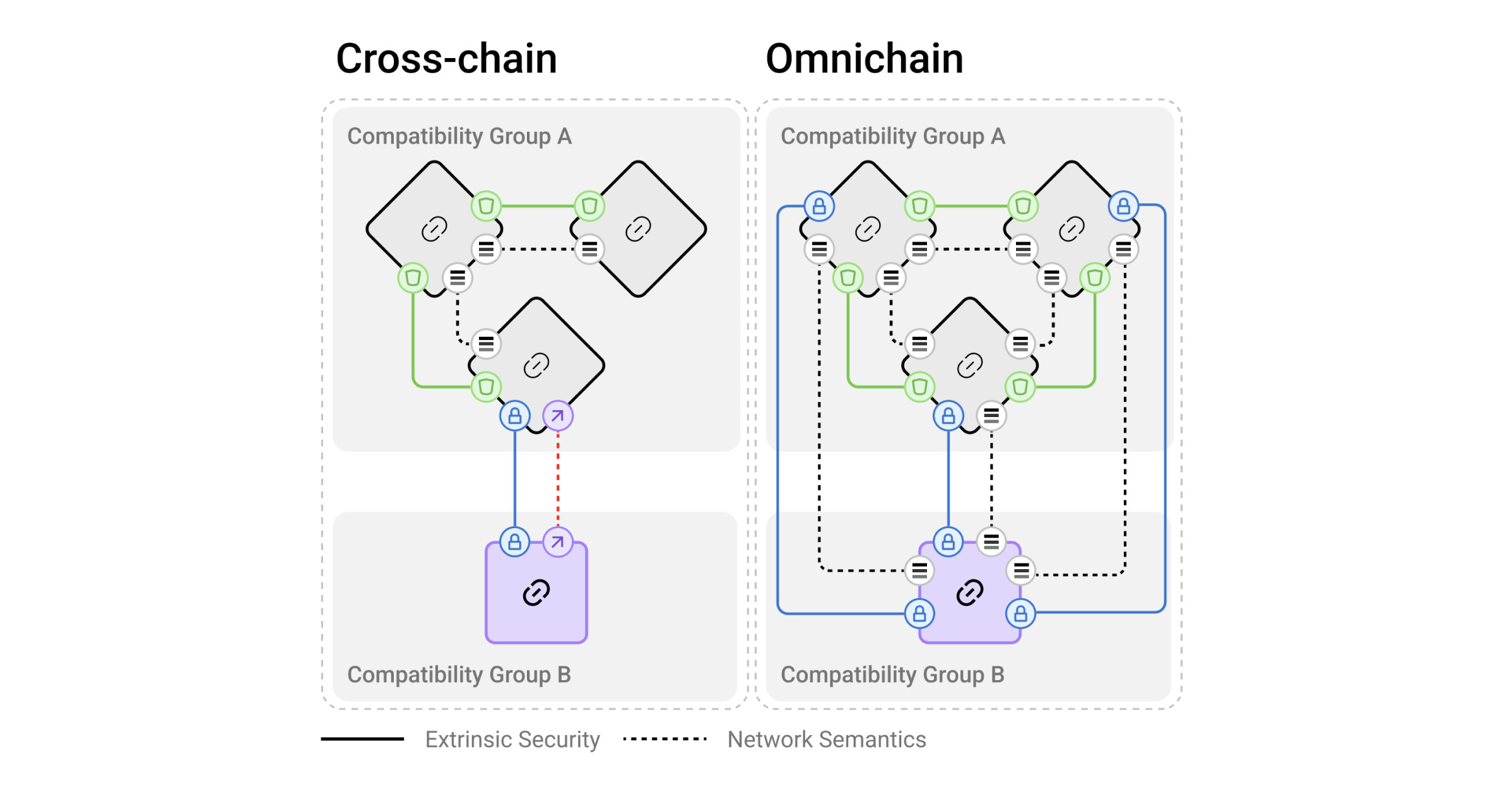
Currently, LayerZero supports over 100 blockchains, providing developers with extensive opportunities to build decentralized applications in areas such as stablecoins, lending platforms, and digital identity. With over 300 active teams and 138 million blockchain messages transmitted via LayerZero, the protocol has proven its scalability and trustworthiness.
For detailed insights, visit the LayerZero Scan analytics platform.
LayerZero Labs
LayerZero was developed by LayerZero Labs, founded in 2021 by Bryan Pellegrino, Ryan Zarick, and Caleb Banister. Observing the growing popularity of Binance Smart Chain (BSC), they attempted to create a game functioning on both BSC and Ethereum.
However, the limitations of insecure blockchain bridges prompted them to design a robust infrastructure for blockchain interoperability, leading to the creation of LayerZero.
How LayerZero Works
To better understand the necessity, innovation, and logic behind LayerZero, let's use a real-world analogy. Imagine that each blockchain is like a separate city where people live, work, and communicate. Each city has its own postal systemwith its own rules for delivering letters and packages. Within the city, everything works smoothly, with fast local delivery.
But what happens if you want to send a letter from one city to another? In real life, we rely on a universal postal service to send mail across cities or even countries. This service ensures the package is delivered from the sender to the recipient, regardless of the local postal systems' rules.
In the digital world of cryptocurrencies, LayerZero acts as a universal postal service for blockchains. It functions as a system that connects different blockchains and facilitates data exchange between them.
For example, if you want to transfer tokens from Ethereum to Solana or enable some interaction between two distinct blockchains, LayerZero provides the necessary infrastructure to deliver this data.
Picture a scenario where you want to use USDC tokens from the Ethereum blockchain on the Avalanche network for trading. LayerZero helps transfer USDC to Avalanche, creating an equivalent representation there, allowing you to proceed with your operations.
Just as a postal service ensures your letter reaches its recipient regardless of the destination country, LayerZero ensures the secure and reliable transfer of information or assets between different networks.
Every blockchain operates with its own rules and mechanisms (such as unique consensus methods or native tokens), but LayerZero serves as a mediator, ensuring that the "package" reaches its destination despite these differences. LayerZero guarantees the accuracy and security of data transmission, ensuring that messages are delivered without loss or error, no matter the sending or receiving blockchain.
When you send a package, the postal system handles the basic task of delivery. Any additional services, such as courier delivery or advanced tracking, are higher-level functionalities. Similarly, LayerZero operates at the base layer of blockchain architecture, providing the foundation for inter-network connectivity without directly executing complex data processing or logic, which happens within the individual blockchains themselves.
When the postal service delivers a letter, it doesn’t concern itself with the letter's contents. In the same way, LayerZero facilitates the transfer of messages (such as smart contracts or transactions) between different blockchains without delving into the specifics of their content. LayerZero provides the infrastructure that connects blockchains and transmits data, leaving the transaction processing to the networks themselves.
LayerZero vs. Bridges
Traditional blockchain bridges connect networks, much like physical bridges link land masses. They allow token and NFT transfers between chains.
How Blockchain Bridges Work
Different blockchains operate according to their own rules, and tokens from one network cannot be used in another without specific mechanisms. Suppose you want to transfer the token CAKE from the BNB Chain, which uses the BEP-20 standard, to the Ethereum network, which operates under the ERC-20 standard. In this case, you cannot use CAKE directly because each network has its own unique features.
This is where blockchain bridges come in. Here’s how they work:
Locking Tokens in the Source Network
When you send CAKE from BNB Chain, the token is locked in a smart contract that is part of the blockchain bridgemechanism. This contract ensures that the CAKE tokens are securely held and cannot be spent twice during the transfer process.
Creating Wrapped Tokens
Once the token is locked, the blockchain bridge creates a wrapped version of CAKE, which is equivalent in value but compatible with the Ethereum network’s standards.
Using Wrapped Tokens in the Destination Network
The wrapped CAKE token is credited to the user’s wallet in the Ethereum network, where it can be used for trading or other activities within Ethereum’s ecosystem.
Returning Tokens to the Original Network
When transferring the token back to the BNB Chain, the wrapped CAKE in the Ethereum network is burned, and the original CAKE is unlocked from the smart contract and returned to the user’s wallet in the source network.
Blockchain bridges provide functionality that allows assets from one blockchain to be used in another, overcoming differences in their mechanisms and token standards.
Challenges with Blockchain Bridges
Blockchain bridges face 2 major challenges:
Security Risks
Blockchain bridges are a prime target for hackers because their smart contracts often hold significant amounts of locked assets. For instance, in 2022, hackers exploited the Ronin bridge and stole $624 million. Similarly, in 2021, the Poly Network bridge suffered a $611 million breach. Even state-sponsored hacker groups, such as North Korea’s Lazarus, find blockchain bridges highly attractive.
Slow and Complex Processes
The process of transferring tokens via blockchain bridges is often slow and cumbersome. Users must pay gas fees in the destination network, navigate blockchain bridge websites to send tokens, sign multiple transactions, and wait extended periods for the operation to complete.
How LayerZero Solves Bridge Problems
LayerZero Labs offers an alternative to traditional blockchain bridges with a messaging protocol that eliminates the need for locking assets. Instead of storing tokens in smart contracts, LayerZero Ecosystem work as follows:
Direct Messaging Between Chains
Network A sends a message with instructions to Network B, which executes these instructions directly.
Burning and Minting Tokens
Tokens in Network A are burned, and an identical amount of new tokens is minted in Network B. This creates aunified token supply across chains.
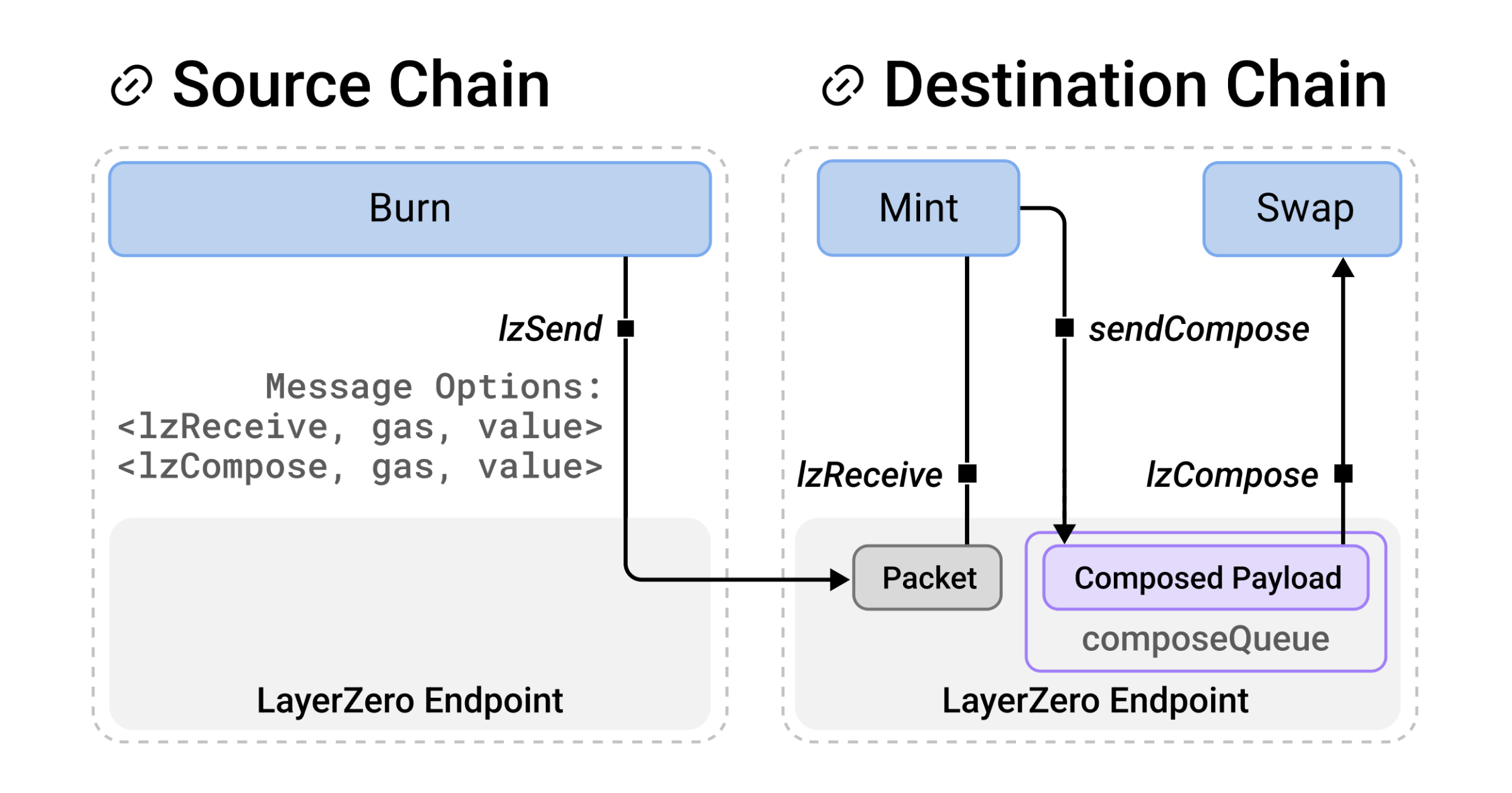
To enable seamless token transfers, LayerZero introduced the Omnichain Fungible Token (OFT) standard, which eliminates the need to lock assets as bridges do.
Burning in the Source Chain
When an Omnichain transfer is initiated, tokens in the source chain are burned.
Minting in the Destination Chain
A message is sent through the protocol to mint an equivalent number of tokens in the destination chain.
Advantages of LayerZero Over Bridges
The LayerZero Ecosystem significantly reduces the risks and inefficiencies associated with blockchain bridges:
No Locked Assets
Unlike blockchain bridges, OFT does not store any assets in smart contracts, making it unappealing to hackers. To date, more than $50 billion in value has been transferred via LayerZero without a single loss.
Faster Transactions
Thanks to direct messaging between chains, transactions are completed much faster than via blockchain bridges.
Comparison: LayerZero vs. Blockchain Bridges
Comparison: LayerZero vs. Blockchain Bridges
Feature | Blockchain bridges | LayerZero |
|---|---|---|
Security | High risk due to locked assets | No locked assets |
Speed | Slow due to multiple steps | Fast thanks to direct chain-to-chain messaging |
Ease of Use | Complex, involving multiple transactions | Simplified, with minimal user intervention |
Applications | Limited (mainly token transfers) | Broad: DeFi, NFTs, decentralized gaming |
Principles of LayerZero
LayerZero enables the creation and use of OApps (Omnichain Applications) by providing reliable data exchange between blockchains. Its architecture and message transmission process ensure seamless interaction and robust security across protocols.
Protocols Built on LayerZero
The LayerZero Ecosystem supports several popular dApps, such as Stargate Finance, Merkly, Polyhedra Network, and more. These protocols leverage LayerZero's capabilities for cross-network interaction, enhancing liquidity and expanding user functionality. The flexibility and security of LayerZero’s architecture empower developers to build scalable solutions without relying on centralized control.
The Message Transmission Process in LayerZero
Message transfer through LayerZero involves several key steps:
Data Packaging
Source data is encapsulated into packets and sent to the verification layer.
Verification
The system employs verification components to ensure data integrity and security.
Execution
Once verified, the message is delivered to the recipient and executed based on the OApp logic.
The process is illustrated with a graphic that showcases the interaction between all components of LayerZero.
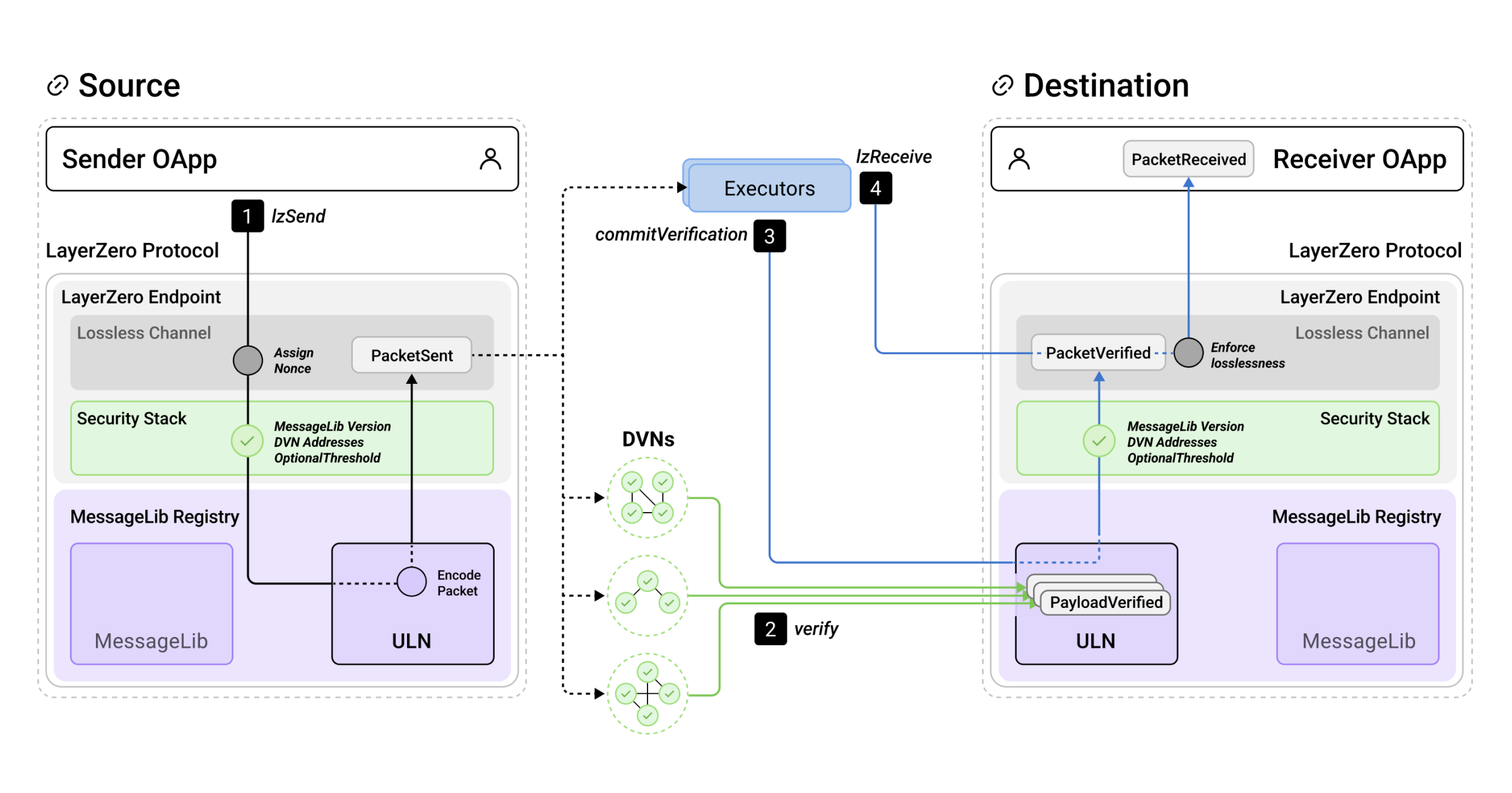
Key Components of LayerZero
Immutable Endpoint
The Immutable Endpoint in LayerZero ensures censorship resistance, message immutability, and one-time delivery, forming the backbone of reliable communication across blockchains in the LayerZero Ecosystem.
MessageLib Registry
LayerZero’s MessageLib Registry registers message verification libraries and leverages immutable modules to prevent vulnerabilities, enhancing the security of cross-chain communication.
Decentralized Verifier Networks (DVNs)
LayerZero integrates Decentralized Verifier Networks (DVNs), distributed systems that verify data between blockchains using cutting-edge technologies like ZK-proofs, K-of-N consensus, and native bridges. This approach ensures secure and accurate interchain data verification.
Permissionless Executors
In the LayerZero Ecosystem, Permissionless Executors play a crucial role by executing function logic independently of the verification process, guaranteeing uninterrupted channel operations.
OApp Security Stack
The LayerZero OApp Security Stack is a customizable security configuration tailored to each application and managed directly by OApp owners.
Investing in LayerZero
Top-tier venture capital and crypto industry players have invested in LayerZero, underscoring its immense potentialas a foundational blockchain infrastructure. The project has raised $263.3 million, reflecting strong investor confidence in the protocol's success.
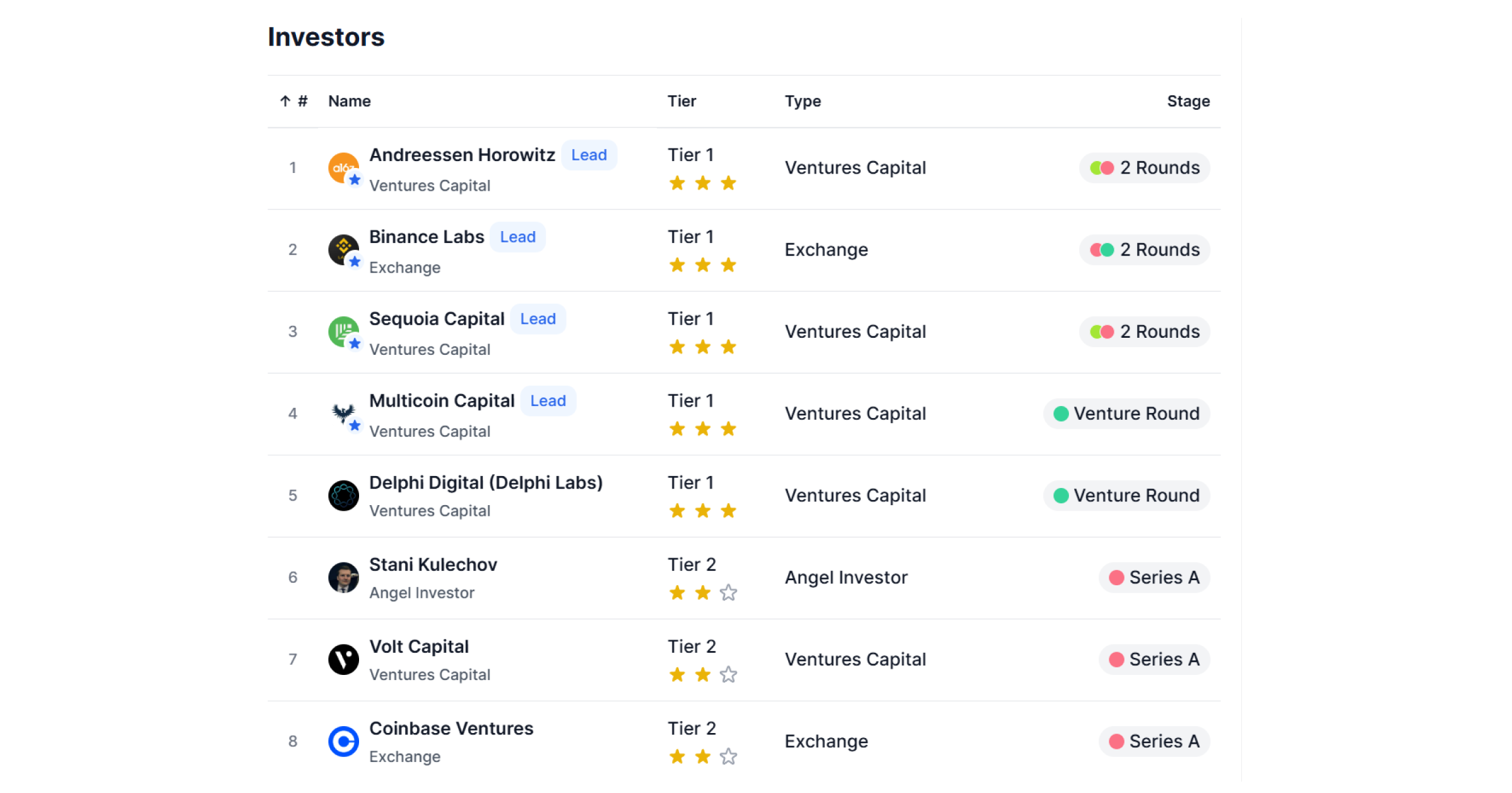
Key Investors in LayerZero
Andreessen Horowitz (a16z)
A renowned venture fund specializing in tech and blockchain, supporting LayerZero as part of its focus on innovative infrastructure projects.
Sequoia Capital
One of Silicon Valley's oldest and most influential funds, adding LayerZero to its portfolio as a game-changing cross-network communication platform.
Binance Labs
The venture arm of Binance, the world's largest crypto exchange, showcasing strategic interest in the development of LayerZero within its ecosystem.
Multicoin Capital
A crypto-focused fund recognizing LayerZero as a promising protocol for cross-chain solutions.
The ZRO Token
ZRO is the native token of the LayerZero Ecosystem, launched on June 20, 2024, with a fixed supply of 1 billion tokens. This token serves as a governance and incentivization tool within the LayerZero protocol. Its transparent tokenomics ensures long-term stability, while its flexible governance model prioritizes decentralization and community needs.
ZRO Token Features
Governance Rights
ZRO holders can vote on enabling or disabling protocol fees.
Burn Mechanism
If fees are enabled, collected funds are sent to a treasury contract and burned, reducing the circulating supply andincreasing ZRO token value.
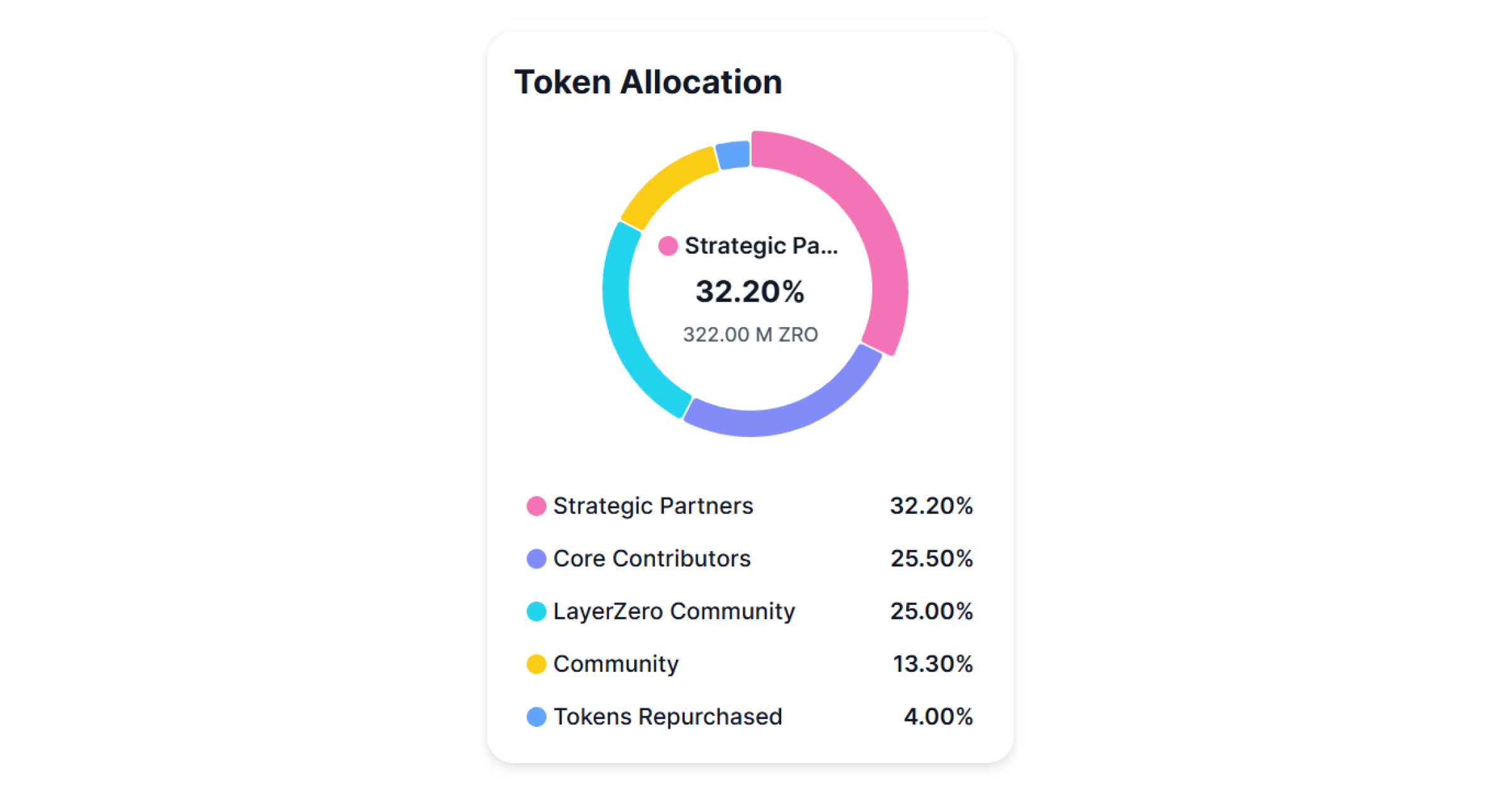
ZRO Token Distribution
Strategic Partners (32.2%)
Allocated to LayerZero investors and advisors, subject to a 3-year vesting schedule: a 1-year lock-up followed by monthly releases over 2 years.
Core Contributors (25.5%)
Reserved for current and future LayerZero Labs team members, with similar vesting conditions.
LayerZero Community (25.5%)
Dedicated to supporting developers, users, and LayerZero ecosystem participants, fostering growth and activity.
Community (13.3%)
Reserved for grants, retroactive rewards, and other community-driven activities.
Repurchased Tokens (4.0%)
Tokens repurchased by LayerZero Labs and allocated for ecosystem development.
We’d like to remind our users that they can get any cryptocurrency for fiat or crypto on SimpleSwap.
Summary
LayerZero stands out as one of the most promising projects in blockchain technology, addressing the critical challengeof cross-network interoperability and laying the groundwork for innovative future applications.
Its unique architecture and components provide secure, scalable solutions for developing and deploying Omnichain applications (OApps), ensuring high security and flexibility.
The protocol is already widely adopted in successful projects like Stargate Finance, Merkly, and Polyhedra Network, showcasing its demand and functionality. LayerZero’s verification mechanisms and reliable message delivery make it a cornerstone for the growth of dApps and networks.
Investments from major players such as Andreessen Horowitz, Sequoia Capital, and Binance Labs highlight the project’s global recognition and strategic importance. The ZRO token further strengthens the LayerZero ecosystemthrough governance and incentivization, reinforcing decentralization and community engagement.
With its cutting-edge solutions and visionary approach, LayerZero is poised to occupy a central position in the blockchain future, enabling the emergence of new technologies and applications that drive the development of decentralized networks and seamless cross-chain communication.
The information in this article is not a piece of financial advice or any other advice of any kind. The reader should be aware of the risks involved in trading cryptocurrencies and make their own informed decisions. SimpleSwap is not responsible for any losses incurred due to such risks. For details, please see our Terms of Service.


